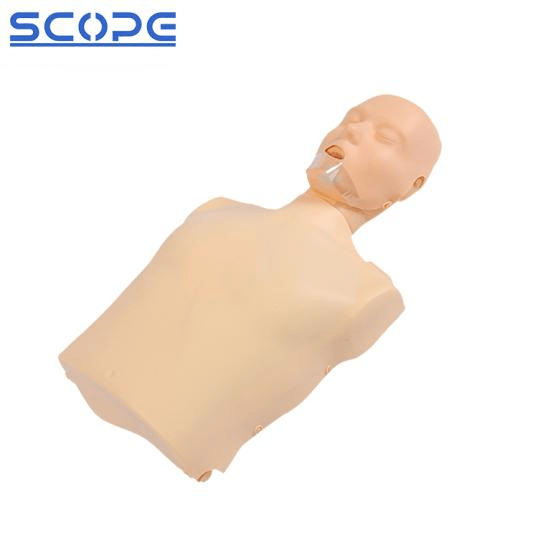Clinical training manikins, also known as patient simulators, are extremely useful tools in a variety of healthcare professions for practicing critical skills in a safe and controlled environment. These lifelike models range in complexity from basic CPR manikins to sophisticated high-fidelity simulators capable of simulating complex physiological reactions. The following is a detailed breakdown of their various applications.
1. Basic Skills Training:
- CPR and First Aid: Manikins are useful for teaching and practicing CPR on adults, children, and infants. They offer realistic compression resistance and allow trainees to practice airway management and rescue breathing.
- Injections and Venipuncture: These skills necessitate accuracy and confidence. Manikins with palpable veins and realistic skin texture allow trainees to practice vein location, intramuscular or subcutaneous injection administration, and blood sample collection.
- Wound Care and Dressing:Wound cleaning, dressing application, and sterile technique can all be practiced on manikins with simulated wounds of varying severity.
2. Advanced Clinical Procedures:
- Advanced Life Support (ALS): High-fidelity manikins can simulate complex medical scenarios like cardiac arrest, shock, and respiratory distress. Trainees can practice administering medications, reading vital signs, and performing advanced airway maneuvers in a realistic setting.
- Surgical and Obstetric Procedures: Specialized manikins train surgeons and obstetricians in minimally invasive procedures, suturing techniques, and childbirth simulations. These models offer haptic feedback and realistic anatomical structures, enabling precise skill development.
- Patient Interaction and Communication:Healthcare professionals can use manikins to practice communication skills, deliver difficult news, and establish rapport with patients in a safe and controlled environment.
3. Additional Benefits:
- Reduced Risk:Manikins lower the risk of injury to actual patients during skill development, especially for critical procedures.
- Standardized Training: Manikins offer consistent training experiences to all learners, regardless of clinical settings or instructors.
- Improved Confidence: Practicing on manikins gives healthcare professionals confidence and competence before they interact with real patients.
- Cost-Effectiveness:Manikins offer a more cost-effective alternative to training on real patients or cadavers, especially for complex procedures.
Clinical training manikins are invaluable tools for improving critical medical skills in a wide range of healthcare professions. They provide a safe, controlled, and standardized environment for practicing basic and advanced procedures, boosting confidence and, ultimately, improving patient outcomes. It is important to note that the characteristics and functions of training manikins vary greatly depending on their type and complexity. Always choose the appropriate manikin for the training purpose, and provide adequate training and guidance to ensure optimal skill development.
For more information,please click:https://www.cqscopelab.com/clinical-training-manikin

